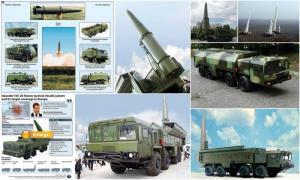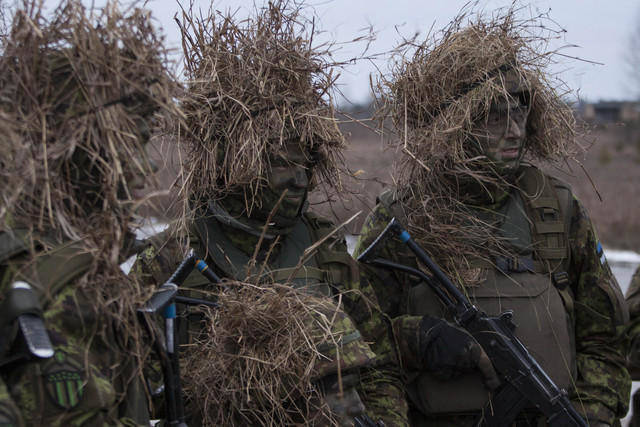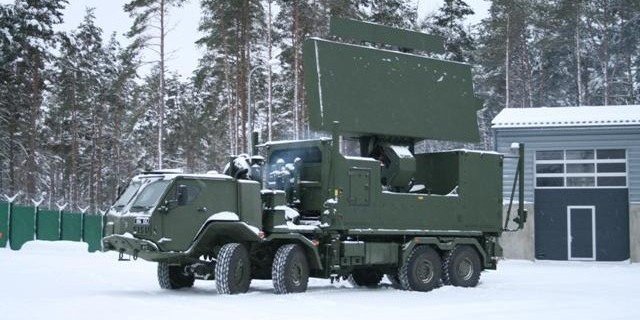It has been suggested that in the scenario of a hypothetical Russia’s attack on the Baltic States, it would commence with an attack on Lithuania, not Estonia or Latvia.
The Lithuania Tribune recently presented an overview of the possible attack, based on Lithuania’s defence analyst Aleksandras Matonis’ analysis. The original article can be found here.
At the peak of the Syrian conflict, it was suggested by the director of the Baltic division at the Moscow Institute of CIS Countries, Mikhail Aleksandrov, that Russia should attack the Baltic States if the United States attacked Syria.
According to the political scientist, the Russian invasion would probably be peaceful and the majority of the Latvian and Estonian populations should welcome the invaders with open arms. Although that seems to be nonsense, how would the Baltic States be attacked and defended?
It is almost clear that a military crisis in the Baltics would not last very long. Russia is in the process of implementation of a costly and ambitious programme to modernise its military capabilities by 2020. Despite that, NATO will remain the most powerful and best-trained military force, the potential of which will be based on the American capabilities. As a longer conflict would probably escalate and could lead to a nuclear catastrophe, the military crisis in the Baltics could only be local and short-lived.
It is not a secret that Moscow has plans on how to invade the Baltic States. In 2009, during a military exercise called Zapad (the West), the Russian and Belarusian military was practising to defend occupied Baltics from arriving NATO forces. The two states also practised to establish a corridor that would connect the Kaliningrad Oblast with Belarus at the time when the exercise Proryv (the Breakthrough) was taking place last year.
Today Russia has the same advantage over the Western powers as Germany had over Russia during the World War I. Not only is the Kaliningrad Oblast heavily militarised, but also remains very swampy – the only land route to the Baltics from the West lies in the northern Poland. Presumably, the aggressor will primarily aim to cut it off and, therefore, the only means to deploy NATO troops will be by air and by sea.

The potential aggressor knows that. It is likely that surface-to-surface Iskander missiles, which are located in the Oblast, will be used for a number of preventive strikes against targets within a 500 km radius – those include Lithuanian military that is concentrated in Rukla, Lithuanian Grand Duke Algirdas mechanised infantry battalion, and arsenals in Linkaičiai and Klaipėda.
The strikes would be followed by land and air invasions. Depending on the operational targets, the aggressor’s armed forces would move from Kaliningrad to Kaunas and Klaipėda, and from Pskov, through Latvia, to Šiauliai and Visaginas.
It is hard to say whether Belarus would contribute to the military attack against the Baltics. In any case, Russia would probably be free to use the Belarusian airspace for military operations and territory for the purposes of transit.
The Lithuanian and Estonian armed forces would probably be reorganised and divided into smaller, very well organised and armed units, the fight of which would be based on guerrilla tactics. Ground, special and volunteer forces would be involved in operations all over the country aiming to cause as much damage for the attacker as possible. In the meanwhile, the navy, that has no real weapons, and armoured vehicles, standing in their garages, would remain ineffective and vulnerable.

I
NATO reinforces would primarily try to eliminate the aggressors’ air-defence systems. After that, air strikes would be launched against its ground forces. The rest is predictable, if nobody uses tactical nuclear weapons. The aggressor would be countered and destroyed, but the consequences of the conflict would be tragic for the Baltic States.
The Russian official doctrine includes a paragraph on the responsibility to defend Russian nationals living in foreign countries. However, the aggressor should be supported within the target state in order to begin the “liberation”. That requires certain preconditions in the target states, such as the use of force against national minorities, or the radicalisation of a government. Without a doubt, the Western powers would also try to solve the problem of state radicalisation, but, if their bureaucratic processes were delayed, Russia or its allies could become the only actors able to help the ones who need it.
An intervention without a gunshot would only be possible if Russia’s information campaign, which lasts for 20 years now, would succeed. Such factors as declining Western influence and values could also contribute to that.
I
See Estonian World’s exclusive infographic about Estonian Defence Forces’ technical capabilities here.
Cover photo: The Estonian Air Force’s Ground Master 400 long-range air defence radar system.
EstonianWorld would like to hear comments and feedback from our readers – do you think that this scenario would ever be likely to happen again?


Interesting scenario. It seems like the Baltic’s defense relies heavily on US forces and I’m not convinced the war-weary American public would support it.
What about defense provided by the EU instead? They have more at stake.
How about the plausible scenario in which, after a hypothetical Russian move towards the invasion of the Baltics, NATO would not move a finger to avoid triggering an open conflict? Just condemnation , disapproval, political retaliation, diplomatic crisis and many mouth-filling words, bot not an actual military response.
Exactly. It is quite likely scenario. But few politicians are brave enough to say it.
https://www.youtube.com/watch?v=IX_d_vMKswE&list=RDDUzRJfAc-HU#t=24
If Ronald Reagan, the US President in the 1980s who was instrumental in the fall of the Soviet Union and its withdrawl from the Baltic States was still the American Commander In Chief, Russia wouldn’t even have contingency plans for a re-occupation of the Baltic states.
It is primarily the weakness of President Obama that is re-igniting Russia’s agressive nature.
Let’s hope that the next US President to be elected in 2016 will have a stiffer spine than Obama.
Long live the free Baltic states!